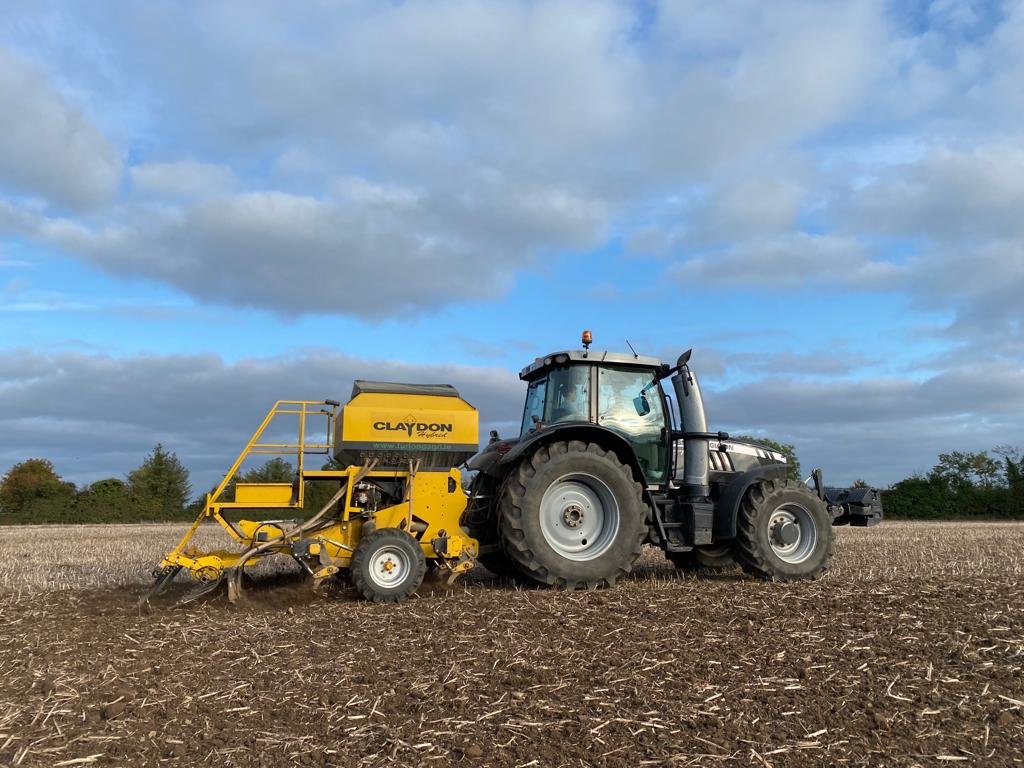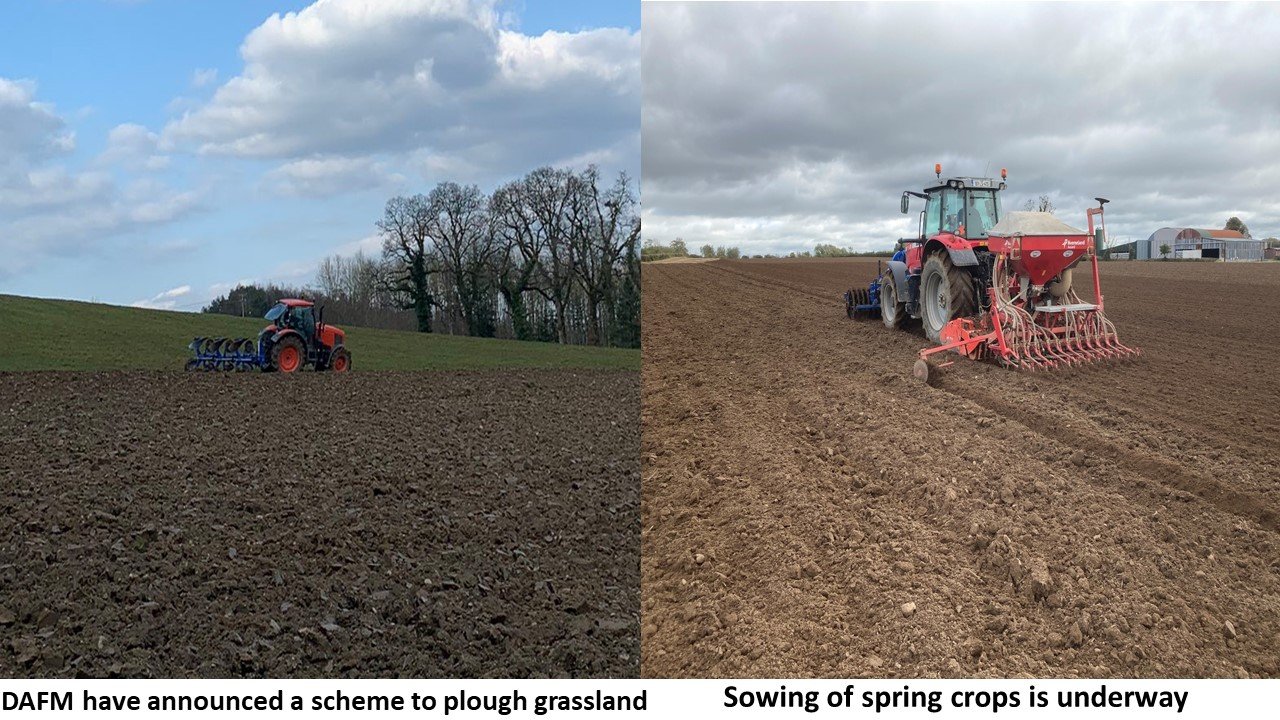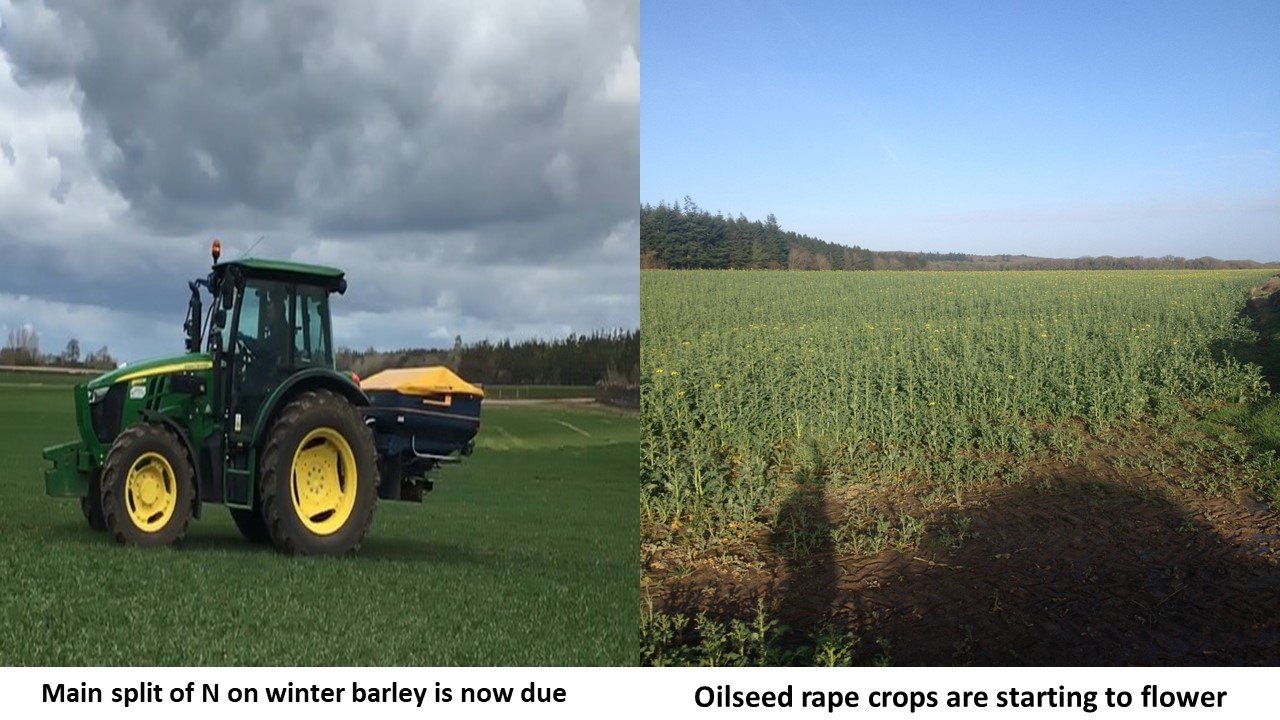
Teagasc Crop Report
Update No 3 2022
Update No 3 2022

To view the full report you must have an existing account with Teagasc ConnectEd.
Farmers sign in hereAlready have a ConnectEd account? Connected Client or Teagasc staff log in here
Tillage Incentive Scheme
The Department of Agriculture and Marine launched the Tillage Incentive Scheme yesterday worth €10m to encourage an increase of tillage area in Ireland.
The DAFM propose to encourage farmers to grow more tillage crops (e.g. barley, oats, wheat) in 2022 versus 2021. For area of crops to be eligible, the land must not have been in tillage production in 2021. A payment of €400 per hectare is proposed. The proposed budget is €10 million. Farmers should declare the relevant crops on their 2022 BPS application.
For more information from DAFM on the scheme see here.
Increased funding for Protein Crops
Protein Crops supports to encourage farmer to grow protein crops (i.e. peas, beans, lupins and combi-crops) in 2022. Supporting domestic production of protein crops will reduce Ireland’s reliance on imported feed materials. €3 million is provided for under the EU funded Protein Aid Scheme and a further €1.2 million is proposed to be provided to guarantee a payment of €300 per hectare for beans, peas and lupins and €150 per hectare for combi-crops (cereal/protein mix). Farmers should declare the relevant crops on their 2022 BPS application.
Areas where more information is pending
The DAFM are also pursuing more measures to help the sector but have not any more clarity to date These include
- Relaxing the 3 crop rule
- using wild bird cover for grain production
- using fallow land for grain production
Please create an account to view hidden content
Spring Cereals
Some spring barley is planted in dry land but most growers are giving land a few extra days to dry out as this current dry spell is expected to continue into the weekend. Most spring wheat is planted and malting barley will take priority over feed. Take the opportunity to incorporate fertiliser into the seedbed to maximize nutrient efficiency. Seed thousand grain weights are above average this season for barley (not oats) so be careful with seed rates but there are large variations depending on where the seed crop was grown so the information on the bag is vital.
Please create an account to view hidden content
Planting cereals after long term permanent pasture
The new tillage incentive scheme will lead to an increase in cereals planted after long term permanent pasture. Barley is likely to be the most common crop due to seed availability and a wider sowing window than wheat and oats. Late March planted wheat will have a late harvest date which carries risk but wheat is suitable for wholecrop. Growers would need to secure a market for oats prior to planting as demand is lower than for wheat and barley. But oats has the advantage of being a very 'forgiving' crop and will give a better yield that wheat or barley in low fertility fields.
Regardless of what crop is grown the basics remain the same. Glyphosate is essential to burn off the old sward, good ploughing to bury trash and good seedbed for crop establishment. Lime is almost required and where pH is low it should be spread on the ploughing.
The biggest challenges to establishing crops after long term permanent pasture is the damage caused by pests and getting the applying the correct nitrogen rate.
Please create an account to view hidden content
Spring Beans
There is still time to plant spring beans but they should take priority over other crops. The area of spring beans this year was expected to be similar to last season but the recent proposal by DAFM that the protein payment will be guaranteed €300/ha may prompt some additional hectares to be planted. Also some farmers are struggling to source nitrogen and beans will be a perfect fit in these scenarios. It is important that beans are planted into high fertility fields with a high pH to avoid yield penalties.
Please create an account to view hidden content
Winter Barley
Crops are progressing well and have received their compound fertiliser application, many of the crops which received the compound fertiliser application in early March are now getting the main application of nitrogen. Wild oats and commercial oats are very visible in many crops however disease levels are relatively low.
Please create an account to view hidden content
Winter Wheat
Most crops are again looking quite well with the first application of fertiliser being applied at the moment. Most crops received a pre-emergence herbicide so for most part a clean up with a spring herbicide is all that is required. Septoria is present in all crops but the dry weather over at the moment should help to reduce the pressure for now.
Please create an account to view hidden content
Winter Oats
Winter oat crops are tall but are showing signs of tipping from recent frosts, in general crops are at GS 30 but the most advanced crops are heading towards GS 31. Disease levels in almost all crops is low with few reports of crown rust or mildew at present however most crops will soon need an application of a growth regulator and possibly a herbicide.
Please create an account to view hidden content
Winter Oilseed Rape
Crops are now starting to flower and many have completed ther fertiliser programme for the year. The current price and prospects for future prices look attractive and may well increase interest in the crop in the autumn.
Please create an account to view hidden content

